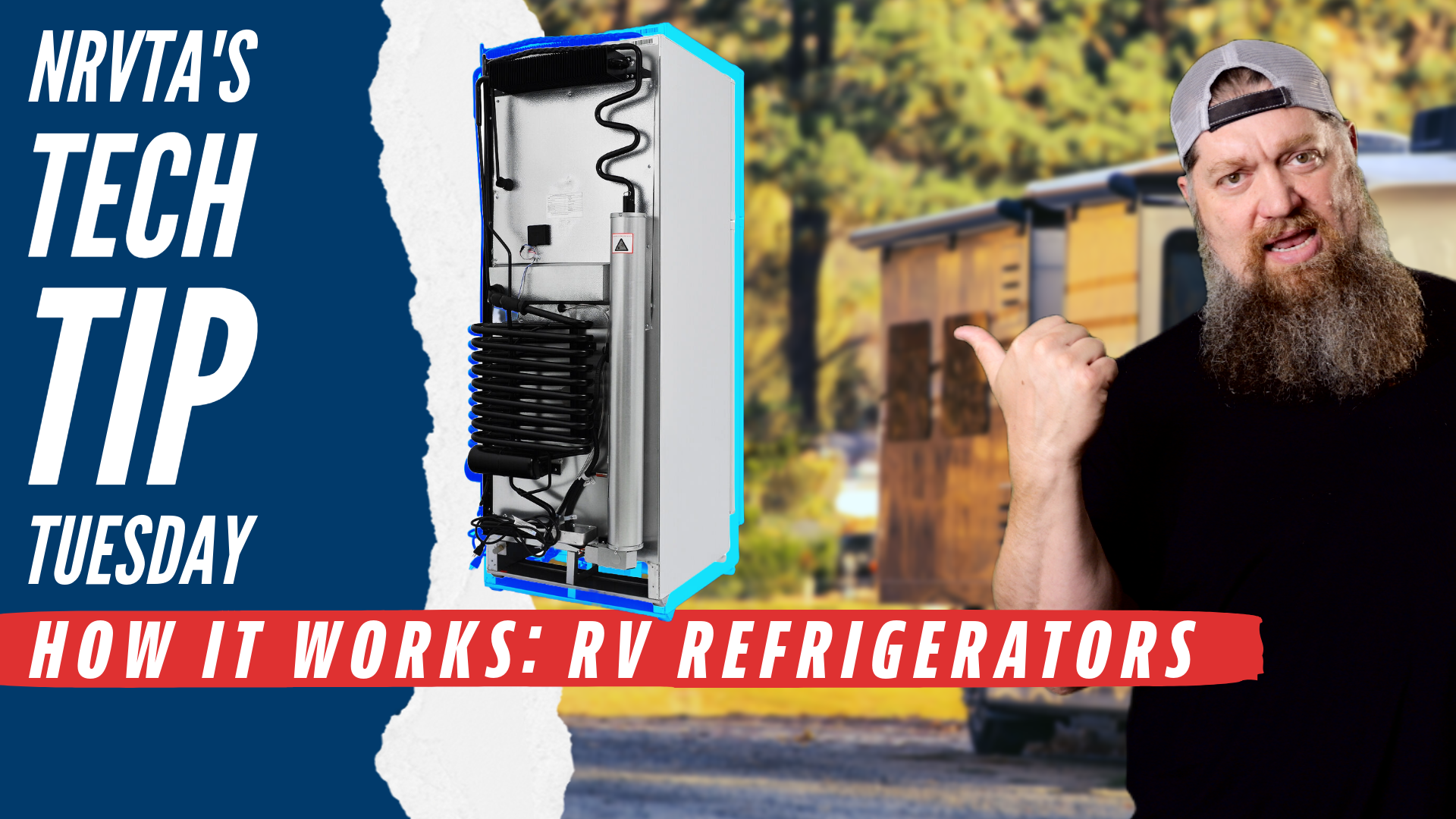Get your RV Technician Certification in as little as 5 weeks!

Welcome to another Tech Tip Tuesday, brought to you by the National RV Training Academy (NRVTA)—the largest hands-on RV training academy in America!
This week, we’re on location at the NRVTA, and we’re covering absorption-style refrigerators. If you’ve ever wondered how these refrigerators work and how to properly maintain them, this post is for you!
How Does an Absorption Refrigerator Work?
Unlike traditional home refrigerators, which use compressors and refrigerant gas, absorption refrigerators rely on a heat source to drive a chemical reaction that creates a cooling effect. Here’s how it works:
- Heating Element or Propane Burner
- Your RV refrigerator has two different ways to heat up the cooling coils:
- An electric heating element (when running on shore power).
- A propane-fired gas valve (when running off-grid).
- Your RV refrigerator has two different ways to heat up the cooling coils:
- Chemical Process
- Inside the refrigerator’s cooling coils, there are three key chemicals at work:
- Ammonia
- Water
- Hydrogen
- The heat source (electric or propane) separates the ammonia from the water.
- Once separated, the ammonia mixes with hydrogen gas, triggering a flash freeze effect—this process cools the fridge and keeps your food fresh.
- Inside the refrigerator’s cooling coils, there are three key chemicals at work:
- Circuit Board and Thermistor
- A small circuit board monitors the fridge’s temperature.
- A thermistor sensor helps regulate the cooling cycle, telling the fridge when to turn on and off.
The Importance of Maintaining Your Propane Burner
If you use propane to power your refrigerator, regular maintenance is essential. Here’s why:
- The burner tube heats up regularly, causing paint chips and rust to build up in the burner area.
- Propane contains ethyl mercaptan, a chemical added to give it that distinctive rotten egg smell.
- Bugs love ethyl mercaptan—which means wasps, spiders, and other critters may nest near your burner.
- A dirty or obstructed burner can result in poor performance, uneven cooling, or even complete failure of the refrigerator.
How to Maintain Your Absorption Refrigerator
1. Inspect and Clean the Burner Area (Twice a Year)
- Open the outside panel to access the refrigerator’s burner compartment.
- Look for paint chips, rust, or debris—use a small brush or compressed air to clean it out.
- Check for insect nests (like wasps or mud dauber nests) and remove them.
- Tip: Winter is the best time to remove nests since the insects are inactive!
2. Clean the Electrode (Igniter) for the Propane Burner
- The igniter electrode can get covered in black soot over time.
- To clean it:
- Use an EMR cloth (if you have one).
- No EMR cloth? A dollar bill works just fine!
- If you don’t have a dollar bill, ask your neighbor for a $20, clean your fridge, and pocket the cash (just kidding… or maybe not).
3. Ensure Proper Airflow and Ventilation
- The fridge relies on good airflow to work efficiently.
- Check the ventilation area to ensure there’s no blockage preventing air circulation.
4. Test Both Electric and Propane Modes
- Regularly switch between propane and electric mode to ensure both heating elements are functioning properly.
Final Thoughts: Keep Your Fridge Running Smoothly
Your RV’s absorption refrigerator is a critical appliance, especially for extended trips and boondocking. By performing simple maintenance twice a year, you can prevent costly repairs, improve efficiency, and ensure it keeps your food cold when you need it most.
✅ Clean out the burner area
✅ Check for insect nests
✅ Remove rust, paint chips, and soot
✅ Keep the igniter electrode clean
✅ Test both electric and propane functions regularly
That’s your Tech Tip Tuesday! If you found this information helpful, be sure to subscribe and share this with your fellow RVers. Stay safe and happy travels! 🚐💨
Get Registered Today!
Talk to a student advisor to learn more!